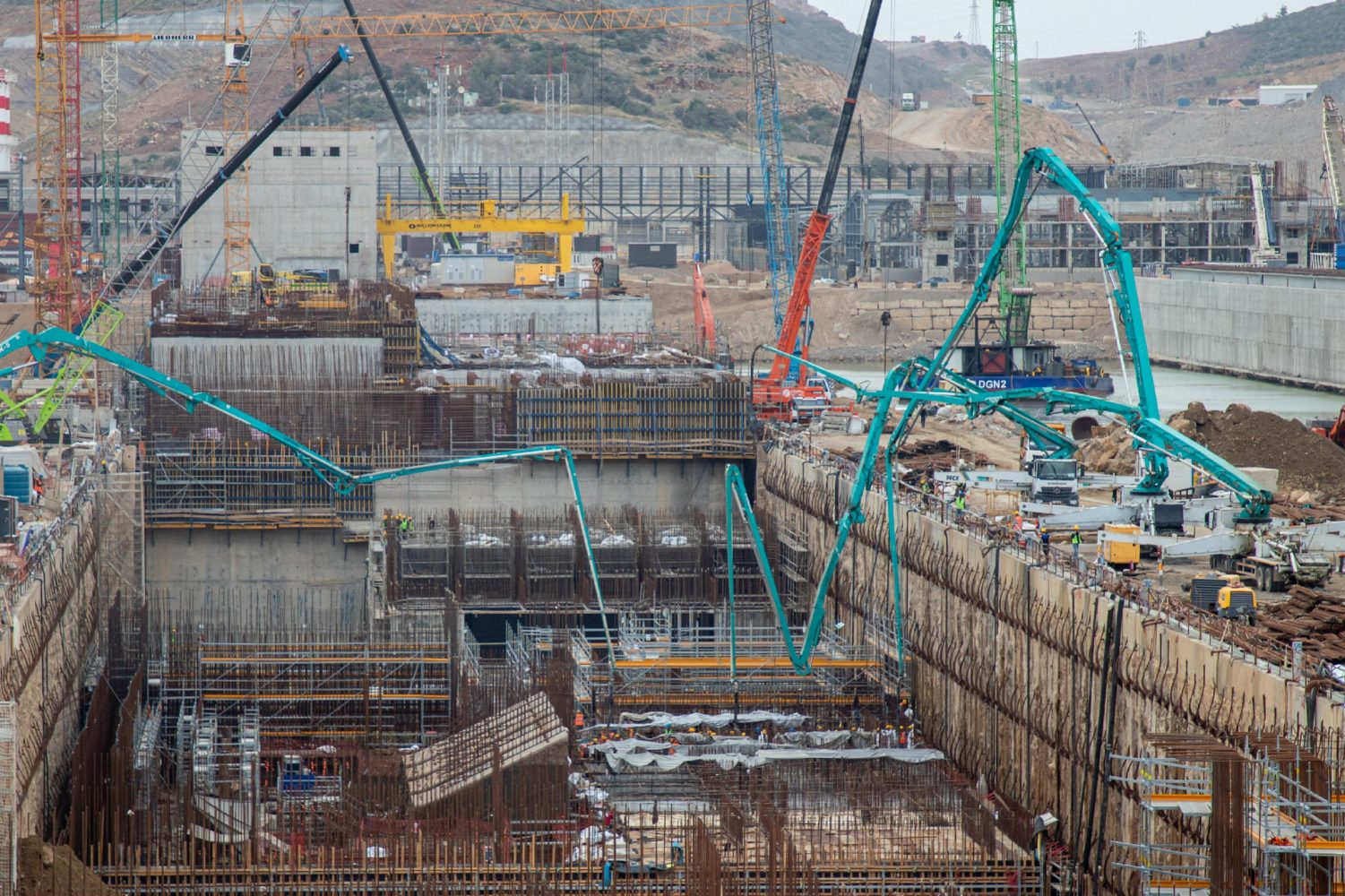
Hot Season at Akkuyu
back to contentsThe last few weeks were busy for the construction team working at the Akkuyu Nuclear Power Plant as builders finished some critical construction operations. Rosatom top managers and Turkish officials held a number of meetings to discuss current issues.
News from the construction site
In late July, concreting of a foundation slab for the pumping station was completed at Akkuyu Unit 3. The foundation slab was divided into eight blocks, each requiring four to ten stages of concreting, depending on complexity. Workers laid almost 20,000 cubic meters of concrete and placed about 2,000 tonnes of steel rebar. “Each concreting stage was preceded by specific on-site preparations. The concreting was done using high-strength concrete. These operations involved 350 Russian and Turkish workers,” said Sergey Butskikh, CEO at Akkuyu Nuclear. The pumping stations of the Akkuyu NPP are designed to supply sea water for the primary operation processes at the nuclear power plant and to remove heat from the auxiliary equipment of the turbine island. Each power unit will be served by one such station.
In July, the first stage of installation of the reactor instrumentation and control (I&C) system started at Unit 1. “This is the most critical set of hardware and software components designed to collect and process data from the sensors located, among others, in the reactor core. The resulting data stream is fed into upper-level automation systems,” said Dmitry Dimashov, Head of Technology at the I&C Division of Rusatom Automated Control Systems (RASU). Power plant operators use this information to monitor all the necessary parameters of the reactor operation.
In early July, installation of the containment prestressing system was completed at Akkuyu Unit 1. Prestressed steel ropes add more strength to the concrete structures of the containment. The prestressing system is designed to withstand extreme loads, such as internal pressure of 5 kg/cm2 or a crash of a large airliner. “The containment prestressing system increases safety and engineering stability of the reactor building and the entire station. Its installation is a particularly complex and responsible task,” Sergey Butskikh said.
Meetings
In late July, Rosatom Director General Alexey Likhachev and Turkey’s Minister of Energy and Natural Resources Alparslan Bayraktar had a working meeting in Istanbul.
“We discussed the progress of work at the Akkuyu NPP site and a roadmap for the commissioning of the plant’s first unit. We are working intensively to commission the first unit as soon as possible. Meanwhile, construction of the other three power units is continuing at pace. When all the reactors of the Akkuyu NPP are put into operation, the plant will provide 10 percent of Turkey’s electricity needs,” Energy Minister Alparslan Bayraktar pointed out.
The parties also discussed the possibility of building Turkey’s second nuclear station at Sinop. The project might be delivered by Rosatom. The solutions to be chosen for the project will factor in the intent of the Turkish authorities to maximize the effect of the project for the national economy.
A monthly working meeting was held at the plant construction site in late July with the participation of Yusuf Ceylan, Director General for Nuclear Energy and International Projects at the Turkish Ministry of Energy and Natural Resources. The parties discussed the progress of construction and installation works, equipment delivery, a preoperational testing program for Unit 1, involvement of Turkish suppliers in the project, and the training of qualified personnel for the power plant.

Another meeting held in July dealt with the exchange of experience in the training of licensed personnel and the establishment of education and training centers (ETCs) for the nuclear stations under construction in Russia and other countries. The parties paid special attention to equipping ETCs with full-scale simulators and simulators that reproduce operating conditions of a nuclear power plant as closely as possible. This will allow operators and engineers to obtain practical skills in the closest to real conditions.
Besides, the experts studied the staff training and certification experience and discussed the development of teaching materials and training programs. About 1,300 Turkish specialists need to be trained to work at the first and second power units of the Akkuyu NPP.
Also in late July, Akkuyu passed a pre-accreditation audit by the Turkish Standards Institution to prove compliance with the international ISO standards. “This is an initial step in the certification process. The pre-accreditation audit helps assess compliance with the accreditation requirements, and demonstrates the company’s openness and commitment to the improvement of its internal processes. ISO certification will officially confirm the compliance of the company’s standards with international requirements,” Sergey Butskikh said.
The auditors praised the high level of staff competence and quality of technical equipment.




